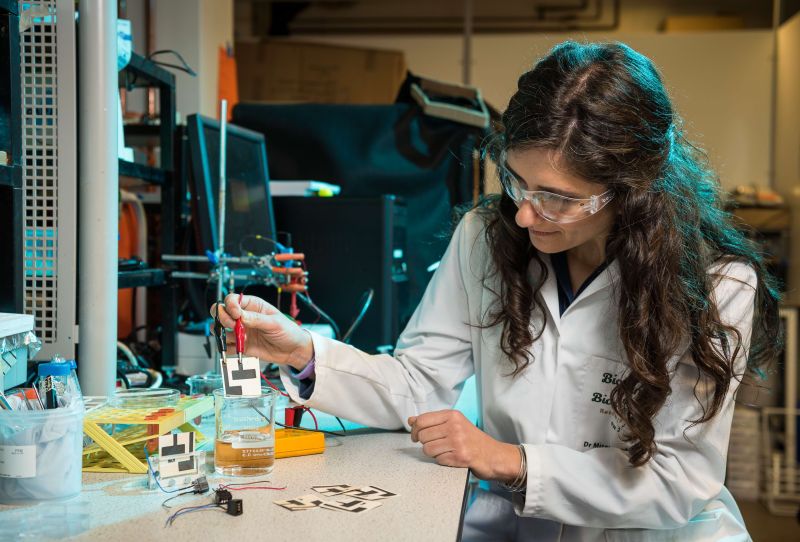Cheap Paper Sensor Detects Water Impurities
Published on by Water Network Research, Official research team of The Water Network in Academic
A multidisciplinary research team from the University of Bath, UK, has developed a cheap, sustainable paper-based sensor to detect toxic components in drinking water.
 The sensor was inspired by the simplicity of a litmus paper test to determine the pH of liquids, and the researchers involved say it could provide some of the world’s poorest countries with an affordable and simple way to test a water supply.
The sensor was inspired by the simplicity of a litmus paper test to determine the pH of liquids, and the researchers involved say it could provide some of the world’s poorest countries with an affordable and simple way to test a water supply.
Access to safe drinking water is one of the UN’s Sustainable Development goals, and cheaper, easier ways of testing water will contribute to this.
The team, made up of researchers from Bath’s Water Innovation & Research Centre (WIRC @ Bath) and Centre for Sustainable Chemical Technologies (CSCT) was led by senior lecturer in chemical engineering Mirella Di Lorenzo.

Image: Di Lorenzo tests the paper sensor (University of Bath)
The sensors, a type of microbial fuel cell, are made by screen printing biodegradable carbon electrodes onto a sheet of paper.
The ‘ink’ is made by dissolving cellulose into an organic electrolyte solution, into which carbon nanofibres and graphite powder are dispersed.
The cellulose fibres making up the paper are cross-linked using a glyoxal solution, to improve its resilience.
A biofilm of electrically active bacteria is added to the carbon electrodes.
When the paper is placed into contaminated water, the electrical signal naturally generated by the bacteria changes. This change can be picked up by an electronic device.
“This work could lead to a revolutionary way of testing water at the point of use, which is not only green, easy to operate and rapid, but also affordable to all. This type of research will have a significant positive impact, especially benefitting those areas where access to even basic analytic tools is prohibitive. This device is a small step in helping the world realise the United Nations call to ensure access to safe drinking water and sanitation as a human right,” said Di Lorenzo.
By Helen Tunnicliffe
Source: The Chemical Engineer
Media
Taxonomy
- Pollutants
- Water Pollution
- Water Security
- Water Quality
- Pollution
- Water Security
- Water Security
- Water Quality Management
- Water Quality Monitoring
- Pollution
- Water Quality Research